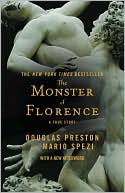Sicily: Three Thousand Years of Human History
Tourists, armchair travelers, and historians will all delight in this fluid narrative that can be read straight through, dipped into over time, or used as a reference guide to each period in Sicily’s fascinating tale. Emigration of people from Sicily often overshadows the importance of the people who immigrated to the island through the centuries. These have included several who became Sicily’s rulers, along with Jews, Ligurians, and Albanians. Greeks, Romans, Vandals, Goths, Byzantines,...
Search in google:
Tourists, armchair travelers, and historians will all delight in this fluid narrative that can be read straight through, dipped into over time, or used as a reference guide to each period in Sicily’s fascinating tale. Emigration of people from Sicily often overshadows the importance of the people who immigrated to the island through the centuries. These have included several who became Sicily’s rulers, along with Jews, Ligurians, and Albanians. Greeks, Romans, Vandals, Goths, Byzantines, Muslims, Normans, Hohenstaufens, Spaniards, Bourbons, the Savoy Kingdom of Italy and the modern era have all held sway, and left lasting influences on the island’s culture and architecture. Sicily’s character has also been determined by what passed it by: events that affected Europe generally, namely the Crusades and Columbus’s discovery of the Americas, remarkably had little influence on Italy’s most famous island. Maps, biographical notes, suggestions for further reading, a glossary, pronunciation keys, and much more make this unique book as essential as it is enjoyable. Publishers Weekly This solid narrative of the Mediterranean island emphasizes how its location has subjected it to one wave of conquest after another. Benjamin (The World of Benjamin Tudela), who has lived in Sicily for the past decade, traces Sicilian history back to the indigenous Neolithic cultures, which dated from 7000 B.C. up through the first millennium B.C. The Greeks and the Carthaginians fought one another to exhaustion, leaving Sicily a prey to the Romans, who converted it into a rich granary of estates worked by (often rebellious) slaves. Muslims from Africa succeeded the Romans in the seventh century A.D., and they in turn gave way to Norman French, the best rulers the island ever had. From the famous rebellion of the Sicilian Vespers in 1282, Aragonese, Hapsburg and Bourbon Spaniards ruled, until Garibaldi used the island as a springboard for his unification of Italy in the 1860s. In this engaging read, Benjamin ably explains the temperament and culture of modern-day Sicilians, through the island's checkered political climate; its rugged and seismic terrain (the still-active Mt. Etna looms to the east); its poor soil and scant rainfall; as well as the mass emigration it endured in the 19th and 20th centuries. (June) Copyright 2006 Reed Business Information.
1Lipari12The Greek period93Romans784Vandals, Goths, Byzantines1155Muslims1326Normans1507Hohenstaufens1858Spanish2219Bourbons26610The Savoy kingdom of Italy31111Autonomous region384
\ Publishers WeeklyThis solid narrative of the Mediterranean island emphasizes how its location has subjected it to one wave of conquest after another. Benjamin (The World of Benjamin Tudela), who has lived in Sicily for the past decade, traces Sicilian history back to the indigenous Neolithic cultures, which dated from 7000 B.C. up through the first millennium B.C. The Greeks and the Carthaginians fought one another to exhaustion, leaving Sicily a prey to the Romans, who converted it into a rich granary of estates worked by (often rebellious) slaves. Muslims from Africa succeeded the Romans in the seventh century A.D., and they in turn gave way to Norman French, the best rulers the island ever had. From the famous rebellion of the Sicilian Vespers in 1282, Aragonese, Hapsburg and Bourbon Spaniards ruled, until Garibaldi used the island as a springboard for his unification of Italy in the 1860s. In this engaging read, Benjamin ably explains the temperament and culture of modern-day Sicilians, through the island's checkered political climate; its rugged and seismic terrain (the still-active Mt. Etna looms to the east); its poor soil and scant rainfall; as well as the mass emigration it endured in the 19th and 20th centuries. (June) Copyright 2006 Reed Business Information.\ \ \ \ \ Kirkus ReviewsA compact history of the Mediterranean's largest island, the most frequently conquered spot on earth. Sicily's natural resources, agricultural importance and strategic location have made it a prize since antiquity. Benjamin (The World of Benjamin Tudela, 1995) separately chronicles the successive periods of Greek, Roman, Vandal, Goth, Byzantine, Muslim, Norman, Holy Roman, Spanish, Bourbon and Italian occupation. The island's geography, topography and climate remain fixed, but the art, architecture, cuisine, religion, education and government altered with each conquest. Sicily's story is the tale of obsidian and sulfur, Zeus and Mohammed, the farmer and the sailor, the slave and the master, migration and emigration, war and more war. A procession of famous people-Archimedes, Empedocles, Cicero, Pompey, Caesar, Richard Lion Heart, Goethe, Coleridge, Nelson, Garibaldi and Patton-all played out at least a portion of their lives at this seemingly inevitable crossroad. No single volume can hope to do more than touch on so many topics or so many actors, making it likely that this one will be more often referred to than read through. Still, the unflagging author does an especially good job of explaining how history never quite goes away in Sicily, how through the accretion of centuries, through so many varied influences, the island's unique culture has emerged. For the reader who knows Sicily only as an irregular triangle on the map, the home of volcanic Mt. Aetna, or the birthplace of the Mafia, the densely packed information here will seem overwhelming. This may account for the author's occasionally awkward shifts in tone from the professorial to the jaunty, as if she feared readers would loseheart if she didn't jolly them along. A useful introduction to a portion of the world whose crowded history is not easily condensed.\ \








